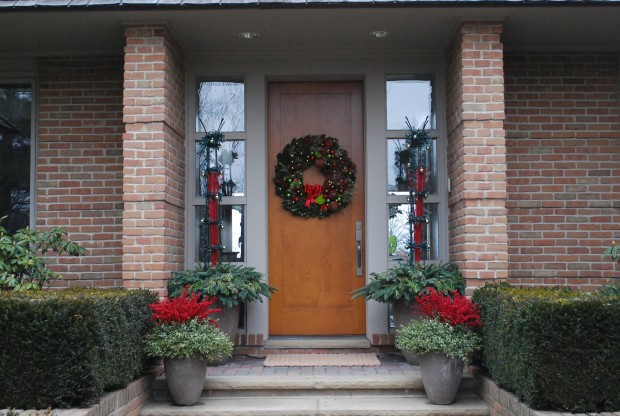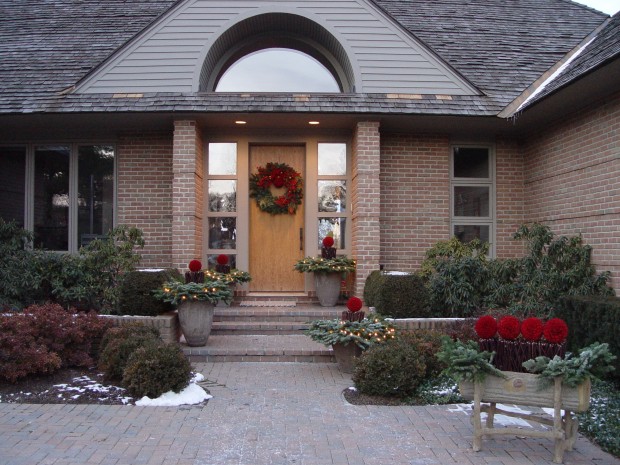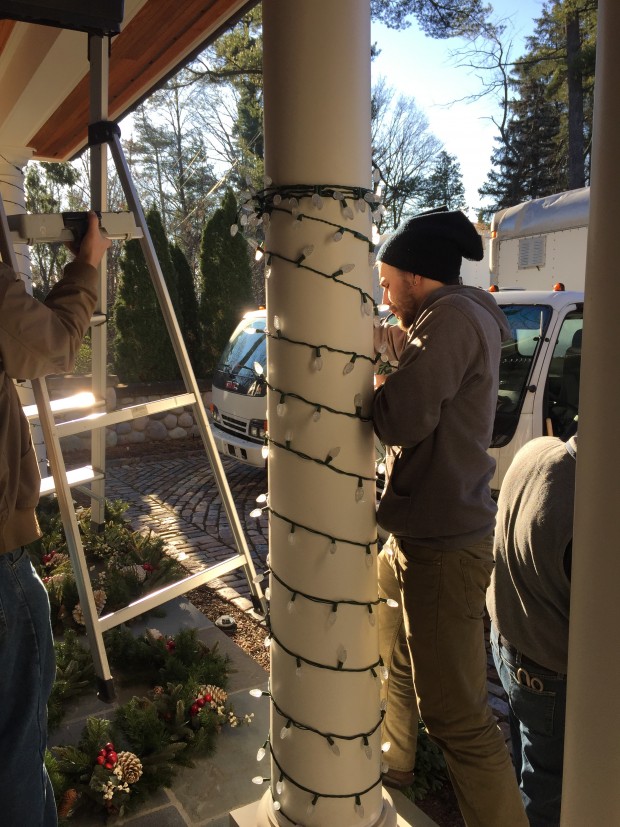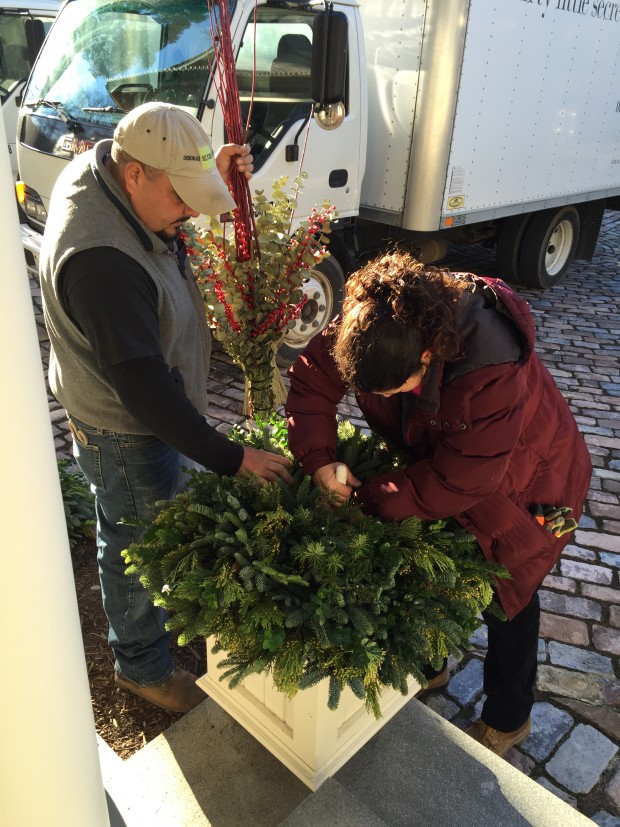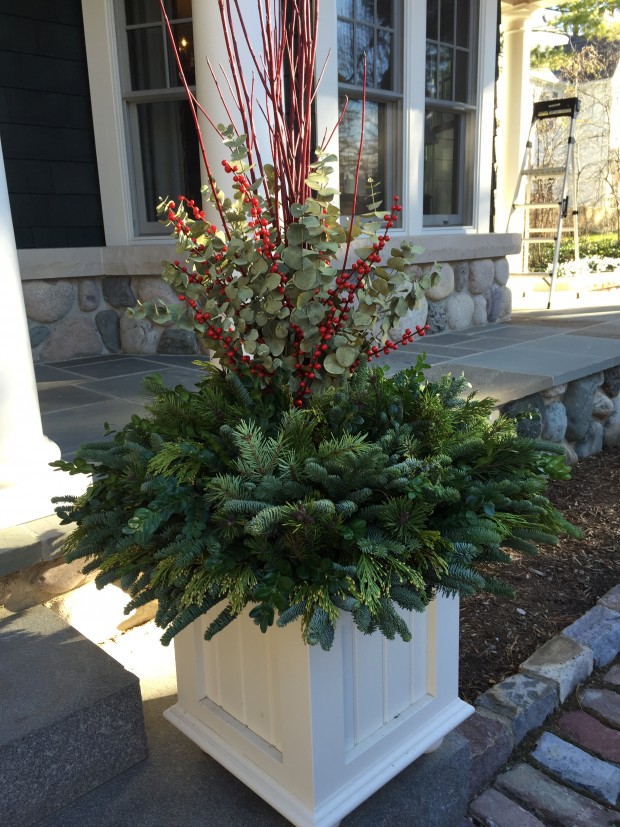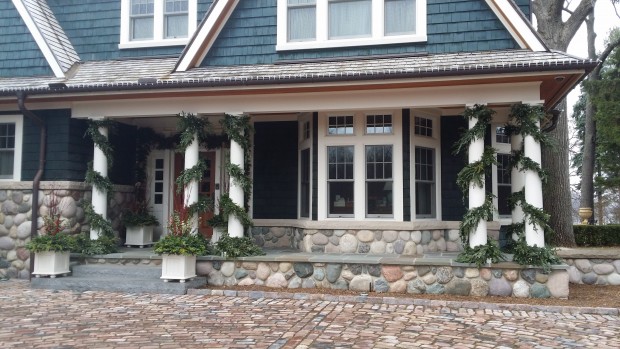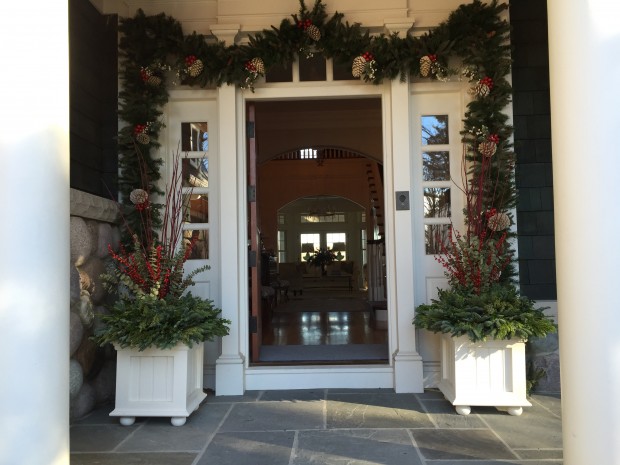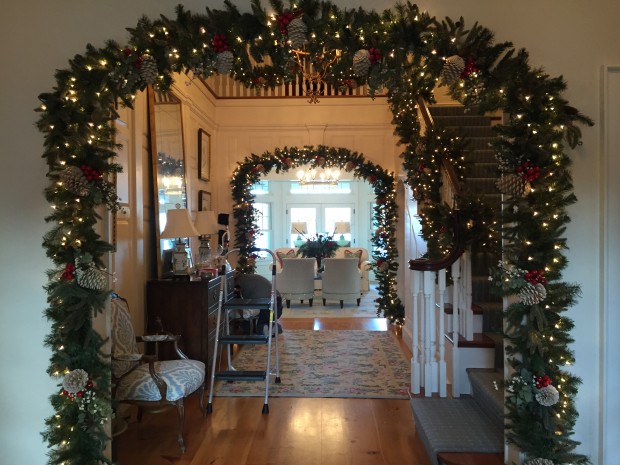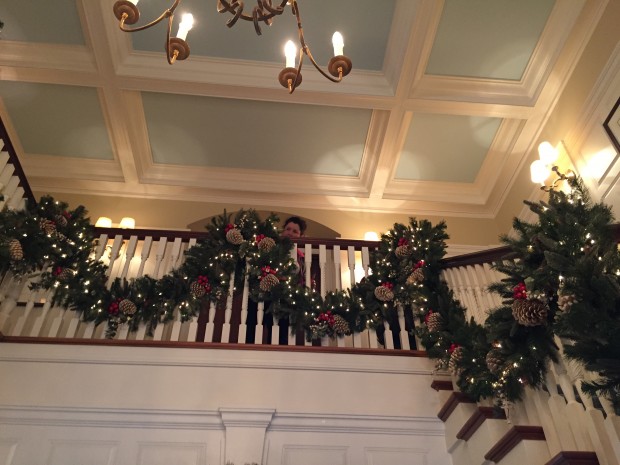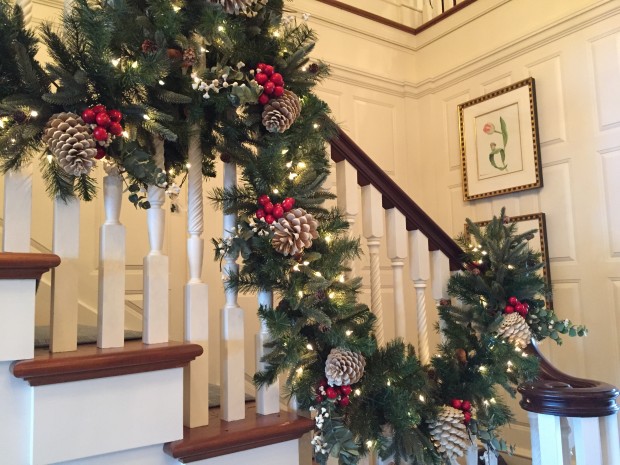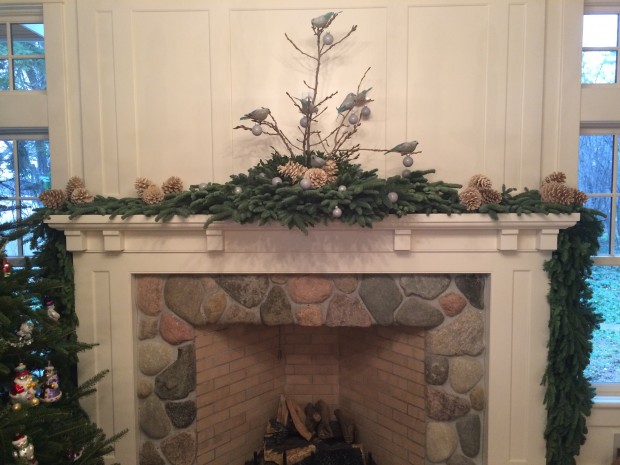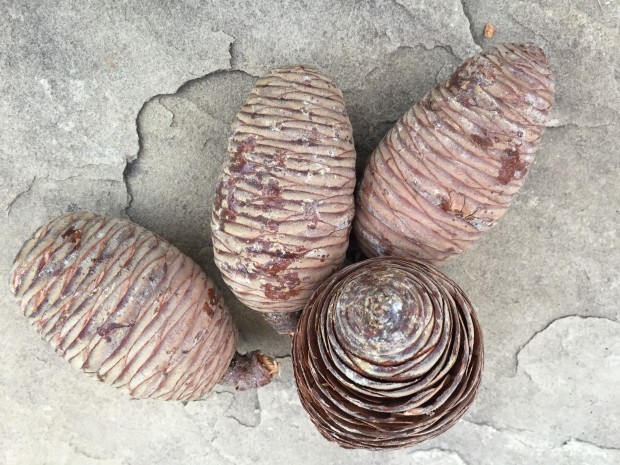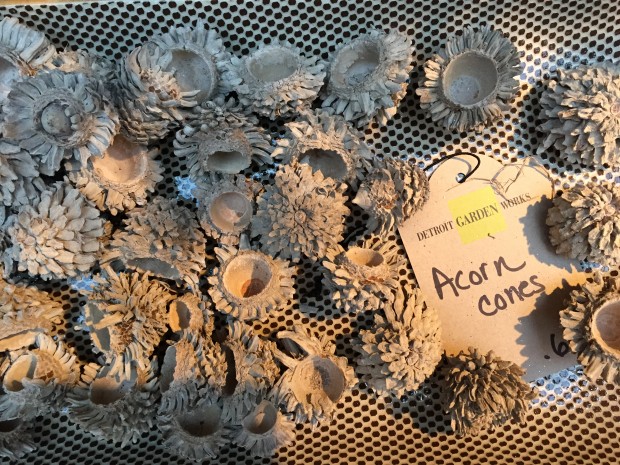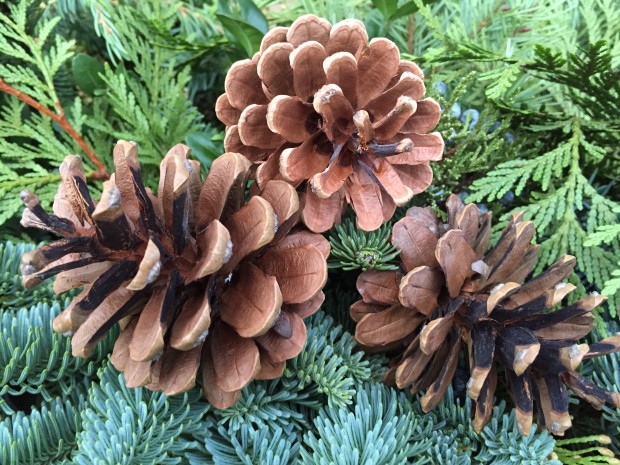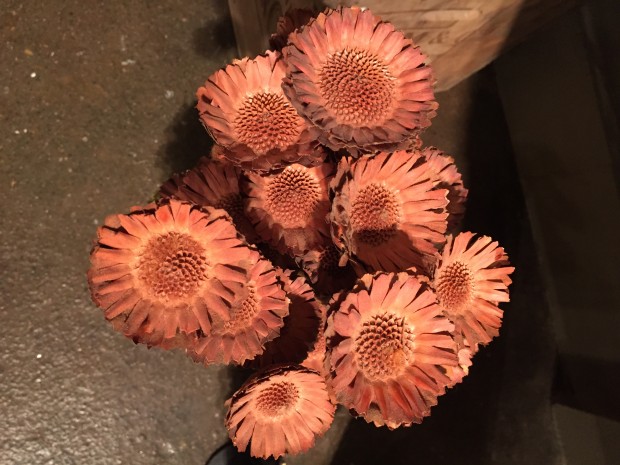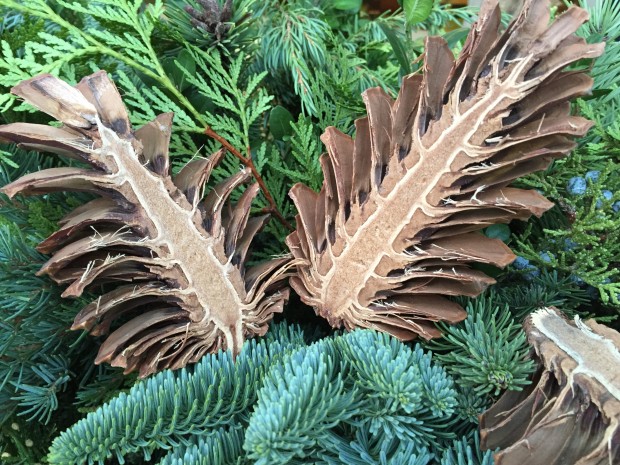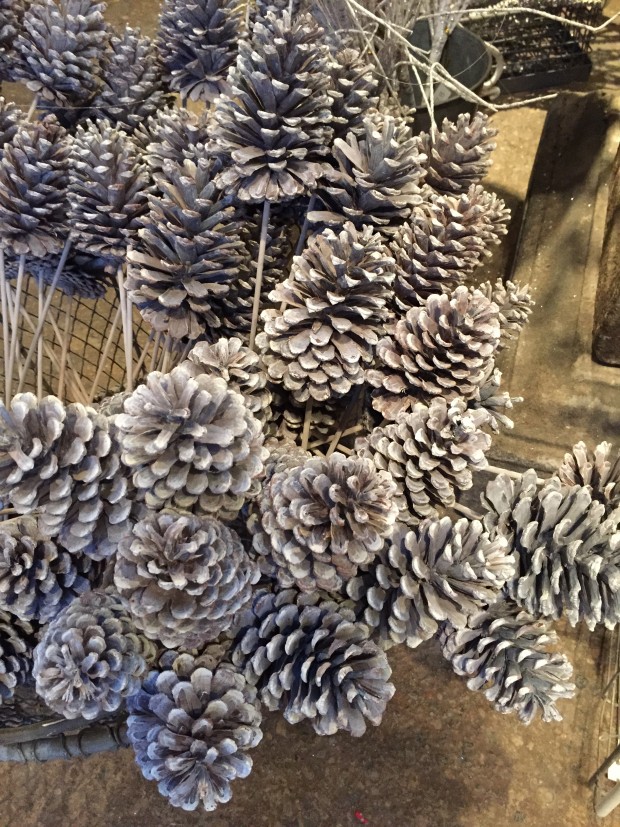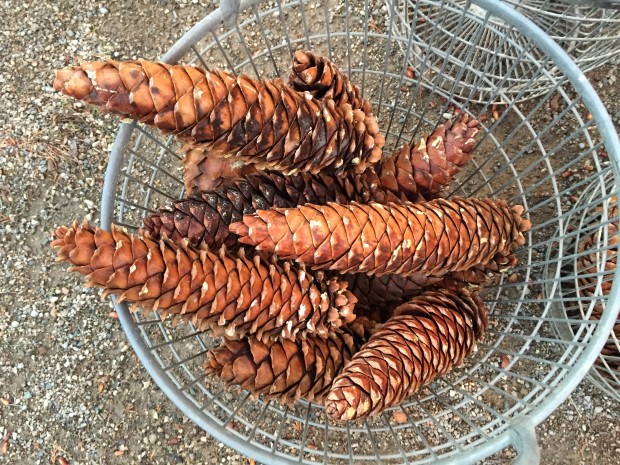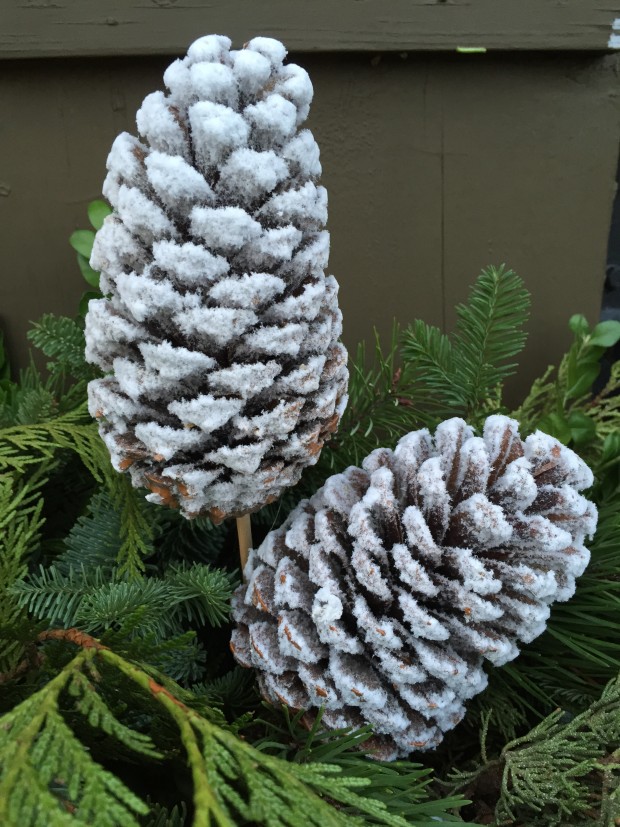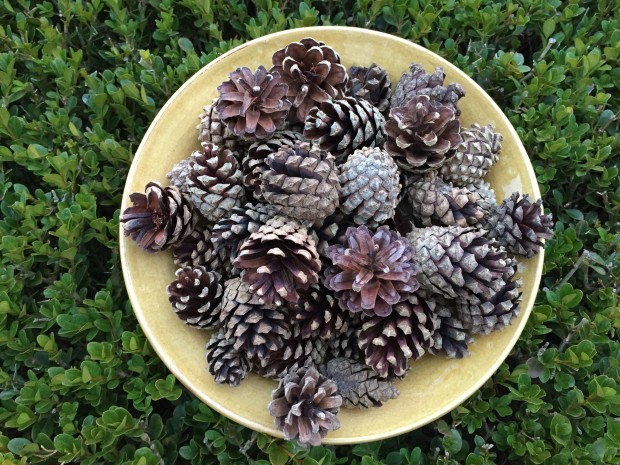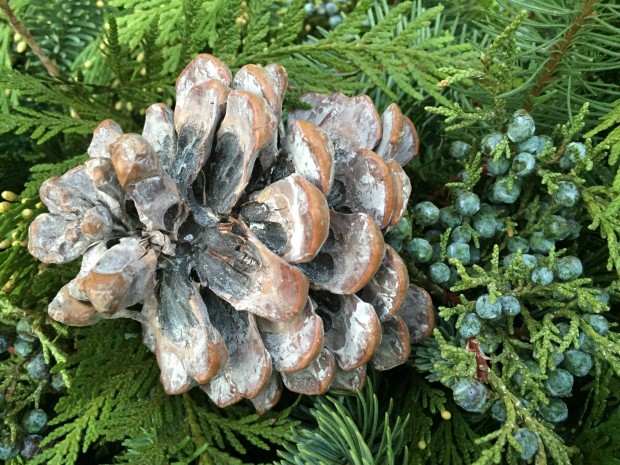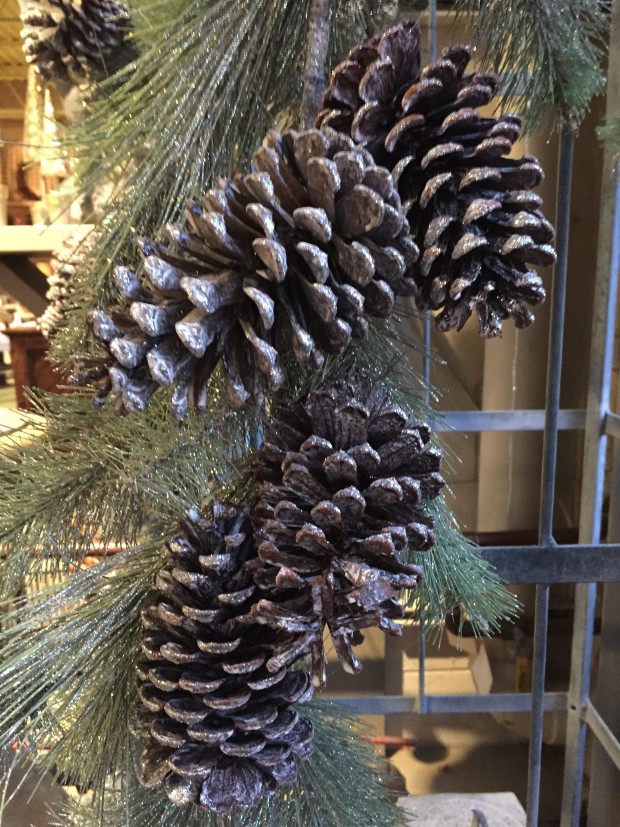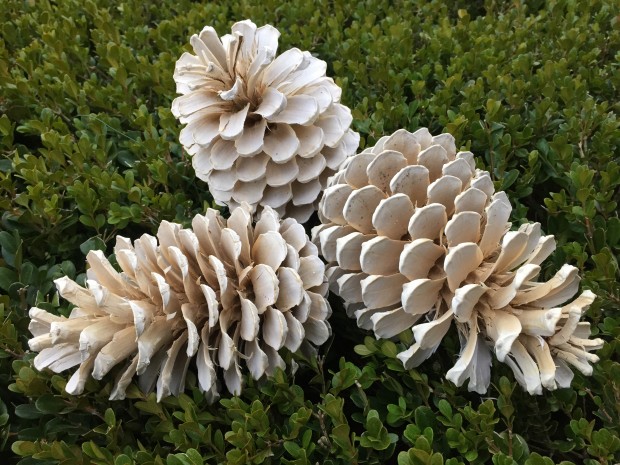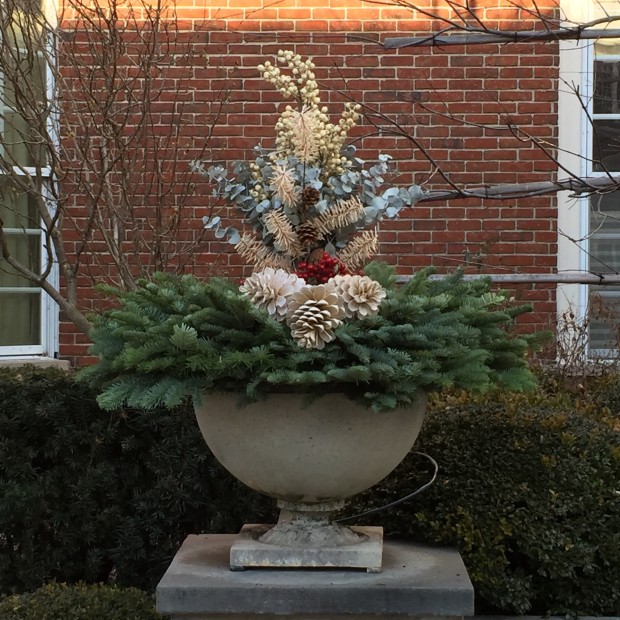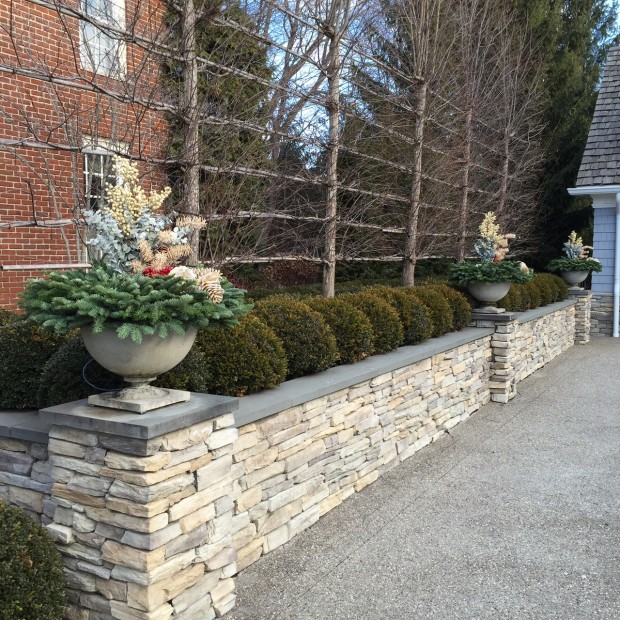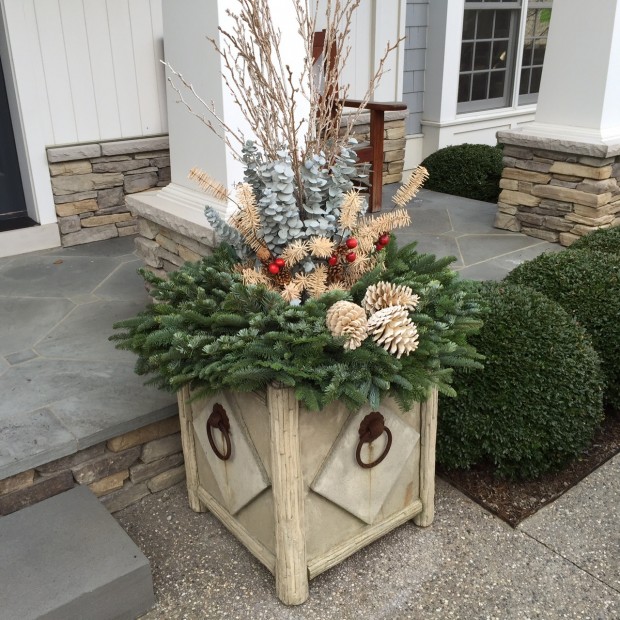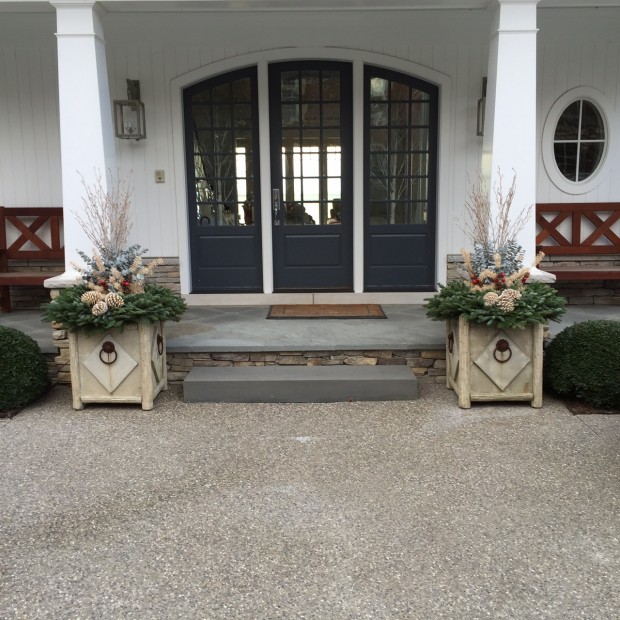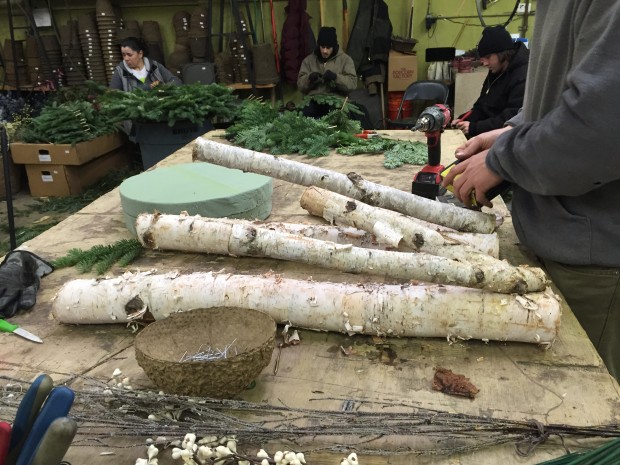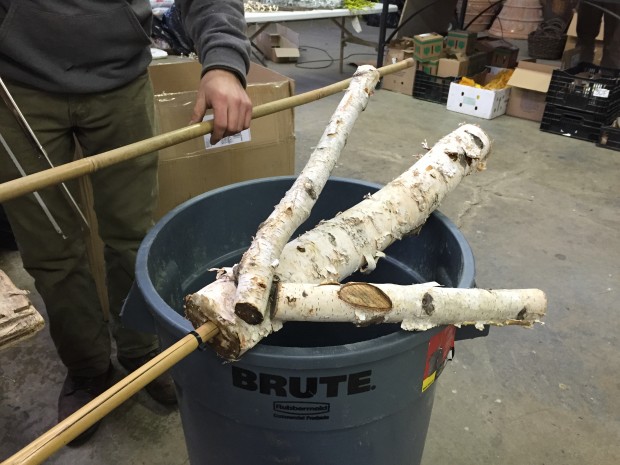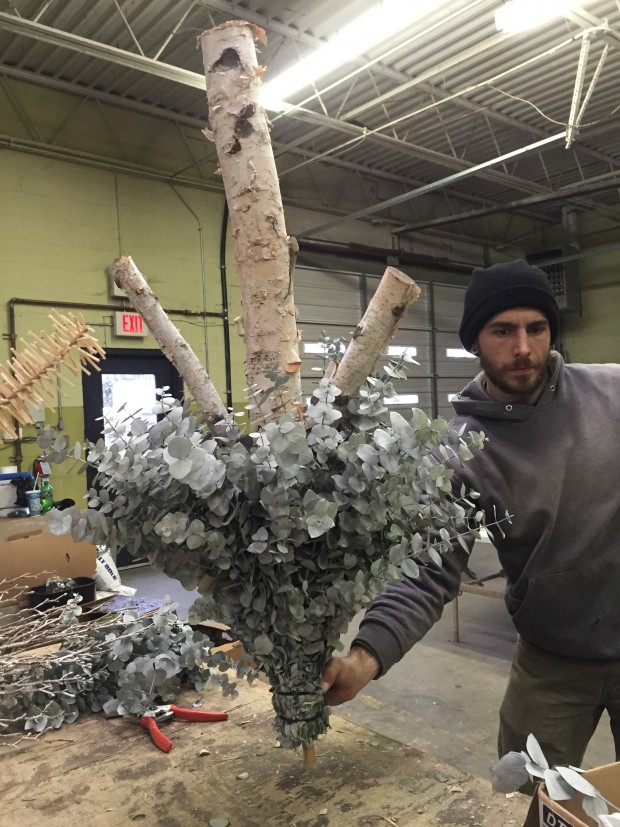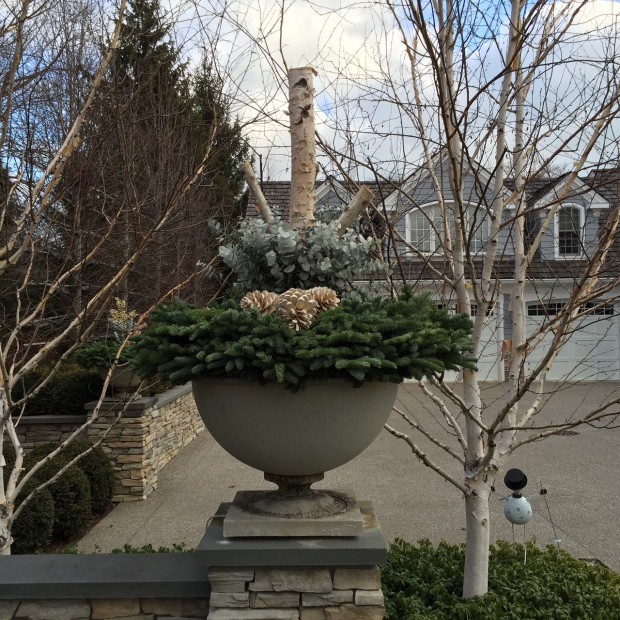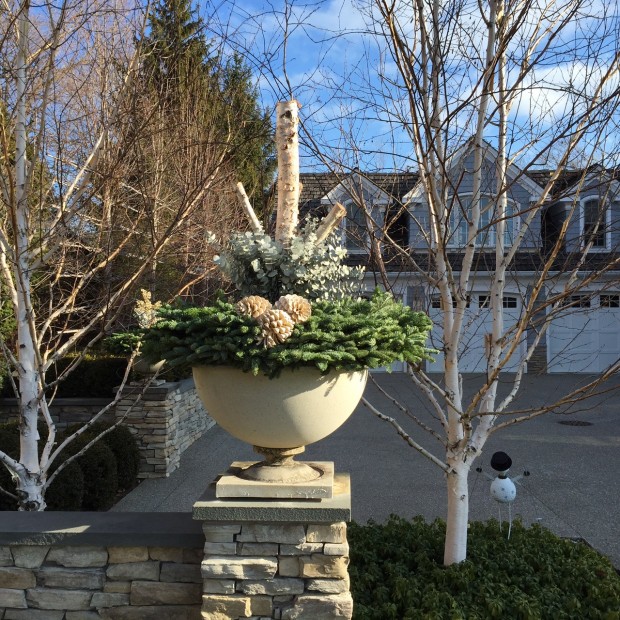 Popular wisdom says that red and green is the traditional color scheme for the Christmas holidays. Maybe it is. The December landscape in my zone is notable for its evergreens, and deciduous plants that bear red fruit. There are many theories about how those colors came to be associated with Christmas-most of them reference practices dating back to the middle ages. Insofar as holiday decor is concerned, there are lots of ways to say red and green. For those that appreciate a little variation on a much loved and traditional color scheme, there are infinite shades of red, and infinite shades of green. The lime green of this flocked pick is striking in a sassy way. The accompanying maroon red of the eucalyptus is muted, even a little moody. The combination of the respective shades of red and green is interesting. Not at all what I would call the traditional Christmas red and green. Each color is all the better for its visual relationship with the other.
Popular wisdom says that red and green is the traditional color scheme for the Christmas holidays. Maybe it is. The December landscape in my zone is notable for its evergreens, and deciduous plants that bear red fruit. There are many theories about how those colors came to be associated with Christmas-most of them reference practices dating back to the middle ages. Insofar as holiday decor is concerned, there are lots of ways to say red and green. For those that appreciate a little variation on a much loved and traditional color scheme, there are infinite shades of red, and infinite shades of green. The lime green of this flocked pick is striking in a sassy way. The accompanying maroon red of the eucalyptus is muted, even a little moody. The combination of the respective shades of red and green is interesting. Not at all what I would call the traditional Christmas red and green. Each color is all the better for its visual relationship with the other.
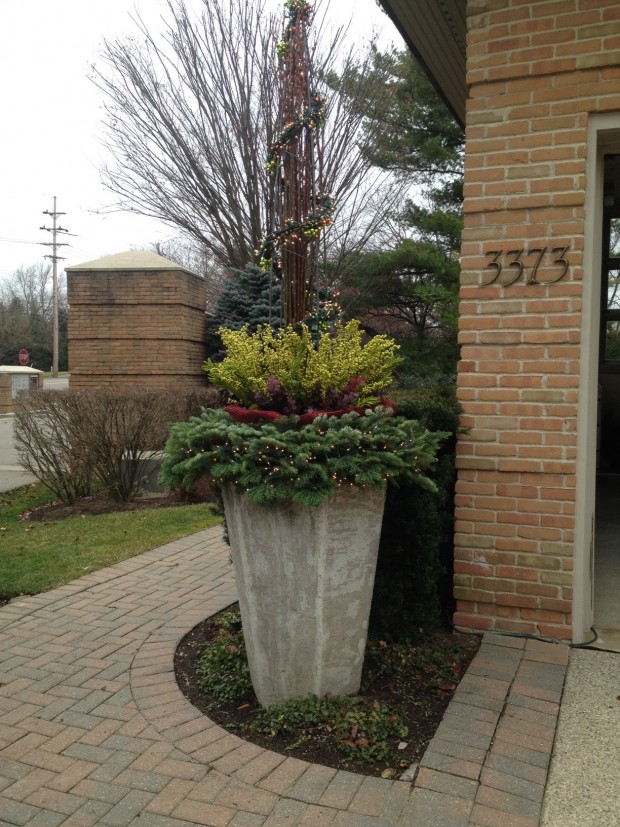 On a cloudy day, the daytime color relationships are even more muted. Come dusk, that will change. The topiary form is strung with red and lime green lights and glass garlands that will pick up that light. Every so often, a cluster of shiny lime green glass balls have been wired to the form. The greens in the bottom have 600 white lights, courtesy of two strings of garland lights. What at this moment has a very reserved appearance will amp up after dark.
On a cloudy day, the daytime color relationships are even more muted. Come dusk, that will change. The topiary form is strung with red and lime green lights and glass garlands that will pick up that light. Every so often, a cluster of shiny lime green glass balls have been wired to the form. The greens in the bottom have 600 white lights, courtesy of two strings of garland lights. What at this moment has a very reserved appearance will amp up after dark.
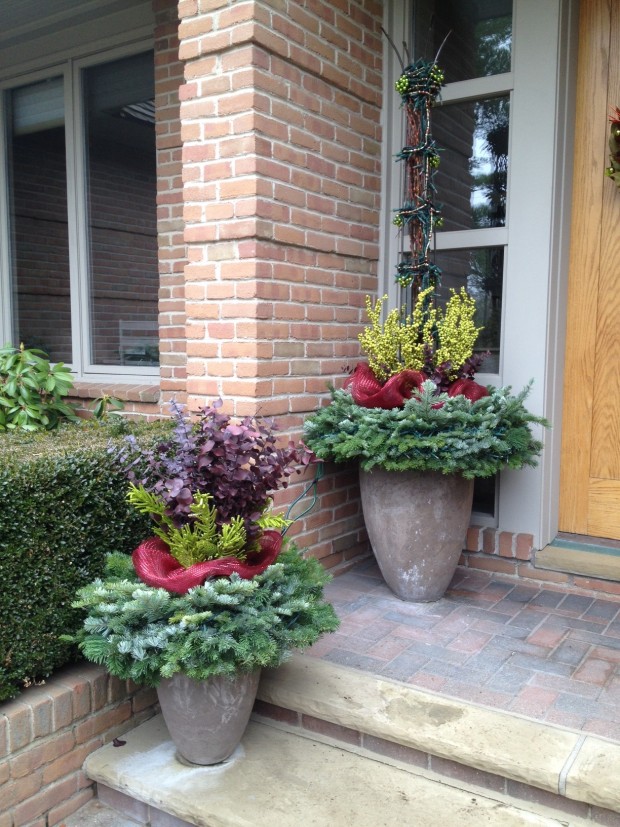 The lights and glass balls on these forms have to be updated once in a while. The winter weather is tough on them. This updating serves another purpose. Every year, little changes in the color and materials makes the winter pots look fresh. The dark red decor mesh is not a traditional red. It invites a second look.
The lights and glass balls on these forms have to be updated once in a while. The winter weather is tough on them. This updating serves another purpose. Every year, little changes in the color and materials makes the winter pots look fresh. The dark red decor mesh is not a traditional red. It invites a second look.
 My clients were surprised and pleased about this rendition of red and green. Though I have been doing their holiday pots for a number of years, no two seasons look quite the same.
My clients were surprised and pleased about this rendition of red and green. Though I have been doing their holiday pots for a number of years, no two seasons look quite the same.
 The one pot off their second floor terrace is always viewed through the glass of the door wall. I think the brighter red is called for. I like it, paired with the maroon red of the eucalyptus. To follow are some pictures of other year’s red and green schemes.
The one pot off their second floor terrace is always viewed through the glass of the door wall. I think the brighter red is called for. I like it, paired with the maroon red of the eucalyptus. To follow are some pictures of other year’s red and green schemes.
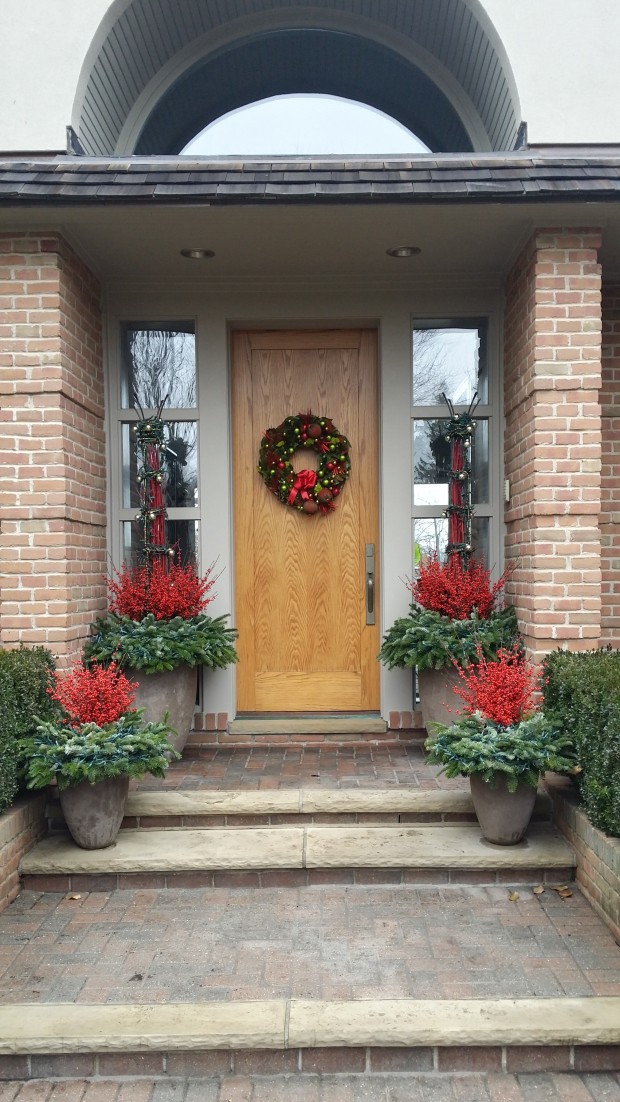 So should you like your Christmas pots any color scheme at all, as long as it is red and green, you still have plenty of possibilities to choose from.
So should you like your Christmas pots any color scheme at all, as long as it is red and green, you still have plenty of possibilities to choose from.
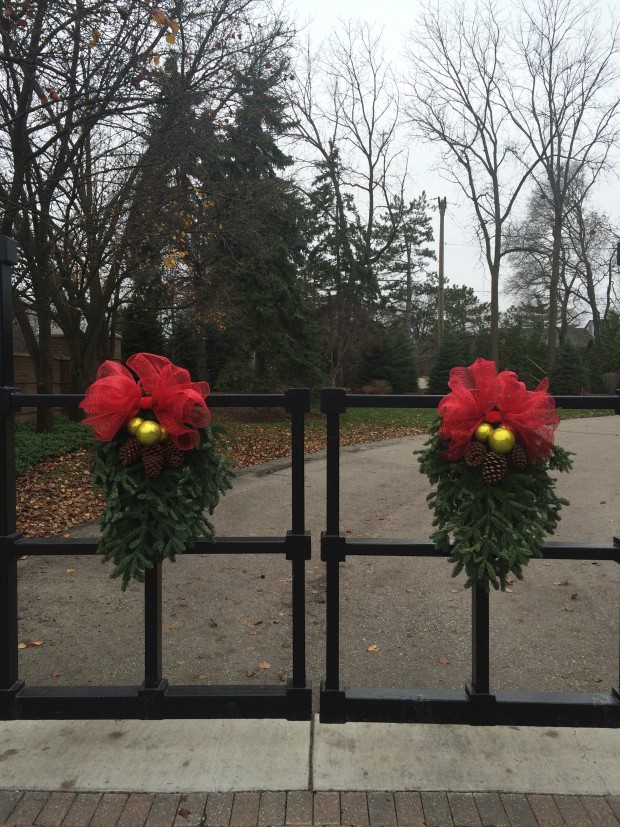 They always ask me to place a little something on the gates into their neighborhood. Here I always opt for the brightest version of red and green that I can muster. As in, Merry Christmas!
They always ask me to place a little something on the gates into their neighborhood. Here I always opt for the brightest version of red and green that I can muster. As in, Merry Christmas!
